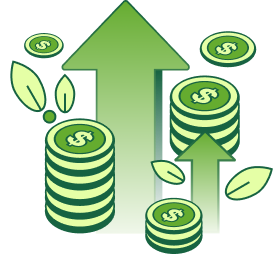Key takeaways
- Loan terms determine your repayment schedule, monthly payments, and total interest costs.
- Shorter terms save money in the long run, while longer terms lower payments but increase overall borrowing costs.
- Comparing loan offers carefully ensures you borrow only what you need and avoid unnecessary debt.
Personal loans are a popular form of credit. People use them for a variety of purposes, from to debt consolidation and more. If you’re interested in taking out a loan, you need to understand all the costs involved. One major factor is the loan terms.
The loan term is the amount of time you have to repay the money. It helps to dictate the interest rate, fees, your monthly payments, and the total interest you will pay. Loan terms are one of the key factors you need to consider when borrowing.
Understanding how loan terms work can help you make smarter borrowing decisions and avoid paying more than necessary.
What are loan terms and conditions?
The loan terms and conditions outline how you are to repay the money. These components include the loan amount, interest rate, repayment schedule, and the total length of time you have to pay it back. Together, they define your obligations as a borrower and determine the total cost of a loan.
Key loan terms
Principal: The initial amount of money that you borrow from the lender.
Interest rate: The percentage the lender charges for the use of their money. It dictates the cost of borrowing.
Loan term (or repayment period): The total length of time you have to repay the loan.
Annual percentage rate (APR): The yearly cost of borrowing, expressed as a percentage. It includes both the interest rate and other fees associated with the loan.
Repayment details: The specifics of your payment. It includes the minimum amount, frequency (e.g., monthly, weekly), and the distribution of each payment between principal and interest.
Fees: Other costs you might have to pay, such as origination fees or prepayment penalties.
The exact loan terms you receive depend on various factors, from the type of loan to your credit score.
Paying too much interest?
How loan terms affect the total cost of borrowing
Your loan terms and conditions dictate how much the loan will cost you. Let’s break down the main factors you need to consider.
Amount borrowed
The principal is the amount of money borrowed. It influences the interest rate, repayment terms, and fees. A higher principal means larger monthly payments and paying more interest over the life of the loan. A smaller loan often has lower monthly payments, costs less in interest, and poses less of a risk to the lender.
Only borrow what you actually need and can comfortably repay. Borrowing more can be tempting, but it will increase the cost of the loan.
Interest rate and fees
Interest is the price you pay for accessing funds, and it directly affects the total cost of a loan. Your credit score, income stability, and debt-to-income (DTI) ratio largely determine the rate you receive. A lower rate makes it easier to manage payments and reduces the cost of credit. Higher rates increase borrowing costs.
Many lenders charge fees that add to the total cost of borrowing. Common examples include origination fees, late payment penalties, or even prepayment penalties if you pay off the loan early. Always review potential fees before signing.
A loan with a slightly higher interest rate but fewer fees may actually cost less in the long run. That’s why it’s a good idea to compare the APR rather than only the interest rate.
Repayment terms
The repayment or loan term is the period over which you repay the borrowed money. It impacts both your monthly loan payments and the amount of interest you pay over the life of the loan.
Longer repayment periods can make monthly payments more manageable, but they often increase the cost of borrowing money. This is because interest accrues over a greater number of months or years, even if the rate itself is low.
Short-term loans, by contrast, usually come with higher monthly payments but lower overall borrowing costs. Since the repayment period is shorter, there’s less time for interest to build, making them more cost-effective.
Let’s look at an example to compare how the personal loan term length can impact the cost of credit. Say you take out a $10,000 loan with a fixed interest rate and a 12% APR.
- A 7-year loan term would have monthly payments of $176.53, and the total interest paid would be $4,828.30.
- A 5-year loan term would have monthly payments of $222.44, and the total interest paid would be $3,346.67.
- A 3-year loan term would have monthly payments of $332.14, and the total interest paid would be $1,957.15.
As you can see, the monthly payments on a 3-year loan are much higher, but the savings are greater. A 7-year loan would cost you roughly $14,828.30, including interest and fees. A 3-year loan is more affordable, costing only $11,957.15 in total.
How repayment terms influence APRs
The repayment terms play a significant role in determining its APR. Lenders often adjust APRs based on the length of the loan term and the level of risk they take on.
Shorter repayment terms usually come with lower APRs because lenders get their money back faster. When you repay a loan in a short amount of time, there’s less potential for economic downturns or for you to default.
Longer repayment terms often carry higher APRs, since the lender’s risk increases the more time it takes to recover the funds. Long-term loans are more vulnerable to inflation as the purchasing power of the money decreases over time. As a result, lenders charge higher rates to compensate for the lost value.
Even a slight change in APR can significantly affect how much you’ll pay over the life of the loan.
What loan term is best for me?
The best loan term depends on your financial situation, goals, and comfort with monthly payments. If you prefer smaller payments that fit easily into your budget, a longer term may be more practical. If you can afford to pay more each month, a shorter term will save you money by reducing the total interest paid.
To decide, evaluate your income stability, current debts, and future plans. For example, if you expect your income to grow, choosing a shorter term now may free you from debt sooner. Always compare offers, consider both short- and long-term costs, and select the shortest term you can comfortably afford.
Looking for a low-cost loan?
Other factors that impact the cost of credit
Term length and interest rates matter, but they are not the only things to consider. Several additional factors can impact both the affordability and overall value of your loan.
Unsecured loans
Unsecured loans do not require collateral. Since lenders take on more risk, interest rates are usually higher. Examples of unsecured loans are personal loans, student loans, and .
The average personal loan term falls between three and five years, though they can range from 12 to 84 months. Bankrate found that people with a 700 FICO score usually get a 12.37% APR on a $5,000 loan with a 3-year term.
Secured loans
Secured loans require collateral, such as a car, savings account, or even a home, to back the loan. When you add collateral, lenders often charge lower interest rates and provide more favorable terms. This is because the lender has something to claim if you default.
and mortgages are common examples of secured loans. Standard car loan terms range from 24 to 84 months. The average interest charged is 6.73% APR on new vehicles and 11.87% APR on used ones.
The average mortgage term is 30 years with an average APR of 6.5%. A 15-year fixed-rate mortgage has a national average APR of 5.7% according to Bankrate. Small changes can lead to significant savings.
Credit score
Your credit score is one of the most influential factors. It affects your approval for the loan and the interest rate you receive. Here is a table outlining the average APR for online personal loans by credit score:
| Borrower credit rating | Score range | Estimated APR |
| Excellent | 720-850 | 11.81% |
| Good | 690-719 | 14.48% |
| Fair | 630-689 | 17.93% |
| Bad | 300-629 | 21.65% |
As is evident, consumers with higher credit scores typically qualify for lower APRs. If you have , lenders may still approve you, but they will offer higher interest rates and stricter terms.
before applying can save you a substantial amount of money.
Debt-to-income ratio
The debt-to-income ratio is how much of your monthly income goes toward paying debts. Lenders use it to assess whether you can handle additional payments. Most lenders require a DTI of 35% or less.
A lower DTI increases your odds of approval and may even secure better loan terms. If your DTI is high, consider paying down debts before applying for a new loan.
Auto-pay discounts
Some lenders let you set up automatic payments from your checking or savings account. As an incentive, they give you a small discount. Auto-pay discounts often reduce the interest rate by 0.25% to 0.5%.
Setting up automatic payments ensures that you won’t miss a due date. You will avoid late fees and positively impact your credit.
Frequently asked questions
1. How do you find the total cost of borrowing?
To calculate the total cost of borrowing, multiply your monthly payments by the total number of payments you will make over the life of the loan. Then identify any upfront fees or other charges, such as processing fees, origination fees, and application fees. Add the two numbers together to find the total cost of borrowing.
2. What does loan term mean?
The loan term is the length of time you have to repay a loan, typically expressed in months or years. It outlines the repayment schedule, including how often you make payments and for how long. The loan term directly affects the monthly payment size and total interest paid.
3. How do terms affect the cost of credit?
Loan terms, such as repayment length, interest rate, and fees, dictate how much you pay for the loan. Longer repayment terms reduce the monthly payments but increase overall interest costs. Shorter terms raise monthly payments but save money in the long run. A shorter-term loan will likely also have a lower interest rate. Understanding these dynamics helps you secure loans with affordable terms.
4. How does the length of a loan impact the total interest paid?
The longer it takes to repay a loan, the more time interest has to accumulate. With longer loans, interest accrues over more months or years, raising the total cost of borrowing. Even with a low interest rate, stretching payments across a long term can add thousands in extra charges. Shorter loans, though harder on your budget, minimize total interest paid overall.
Bottom line
The cost of credit is not just about monthly payments, but how much the loan costs overall. Loan terms are an essential factor to consider. The terms and conditions you receive set the interest rate, fees, monthly payments, and repayment period. The repayment terms influence the APR and how much total interest you will pay over the life of the loan.
Whenever you borrow, consider the loan term to make an informed decision that takes into account the true cost of credit.




